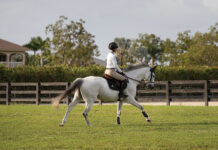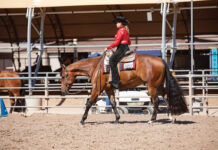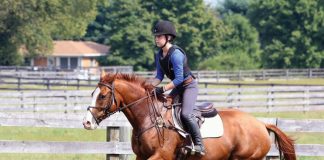Of all the movements, it is always the canter that seems to cause the most problems for students and their horses. Whether this is because the gait is generally speedier, or horses tend to misbehave because the rider is less balanced, it is hard to tell. I suspect it’s a mixture of both.
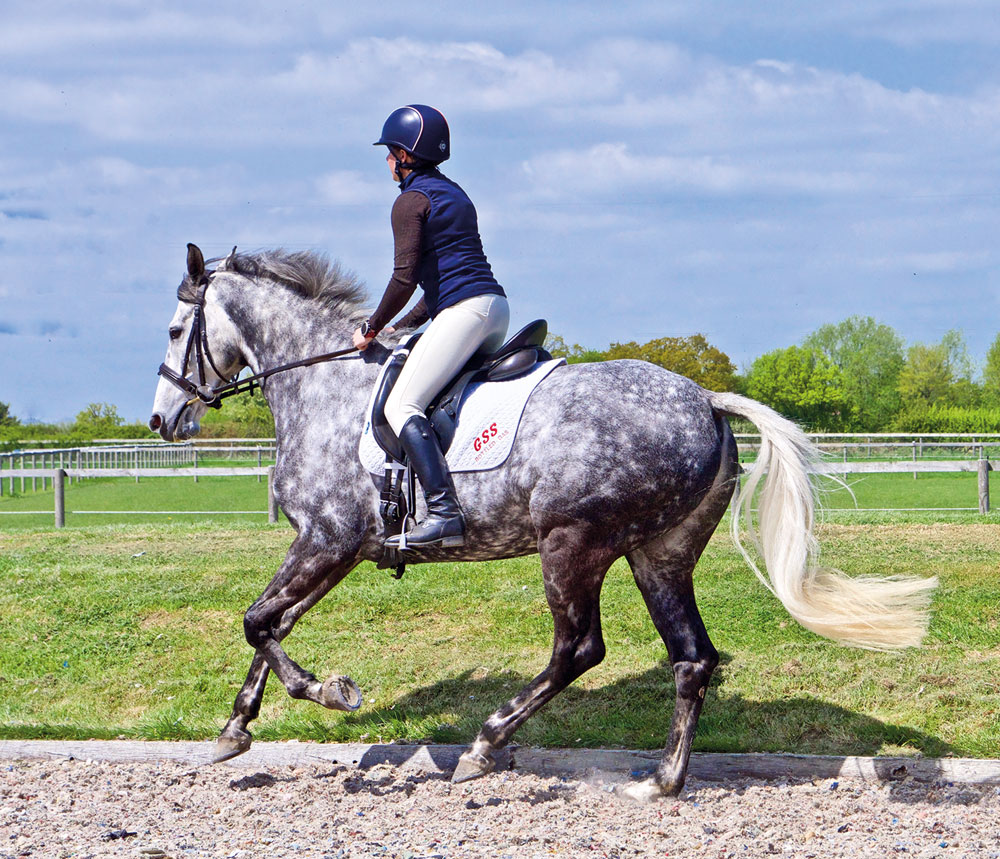
Generally, I find it is a lack of knowledge about the weight aids that can spoil the canter. Most people know the inside leg should be at the girth, the outside leg behind the girth, but it is the “feel” that is everything—both in riding the canter and teaching it—and this is not discussed enough.
But first, let us put ourselves in the horse’s shoes. We have to appreciate that he needs as much freedom as possible to push off with the outside hind in order to take up the correct lead, and this should inform us where our weight needs to be.
With a riding arena to negotiate, there is always the danger that the rider will force the horse to go disunited or change leads, not because he wants to, but because he has no choice. Too much movement in the rider’s body can be very unsettling for the horse, and to continue on the correct lead in a constricted area where corners are continually coming up would make any horse feel threatened. It is a miracle that most generally manage as well as they do.
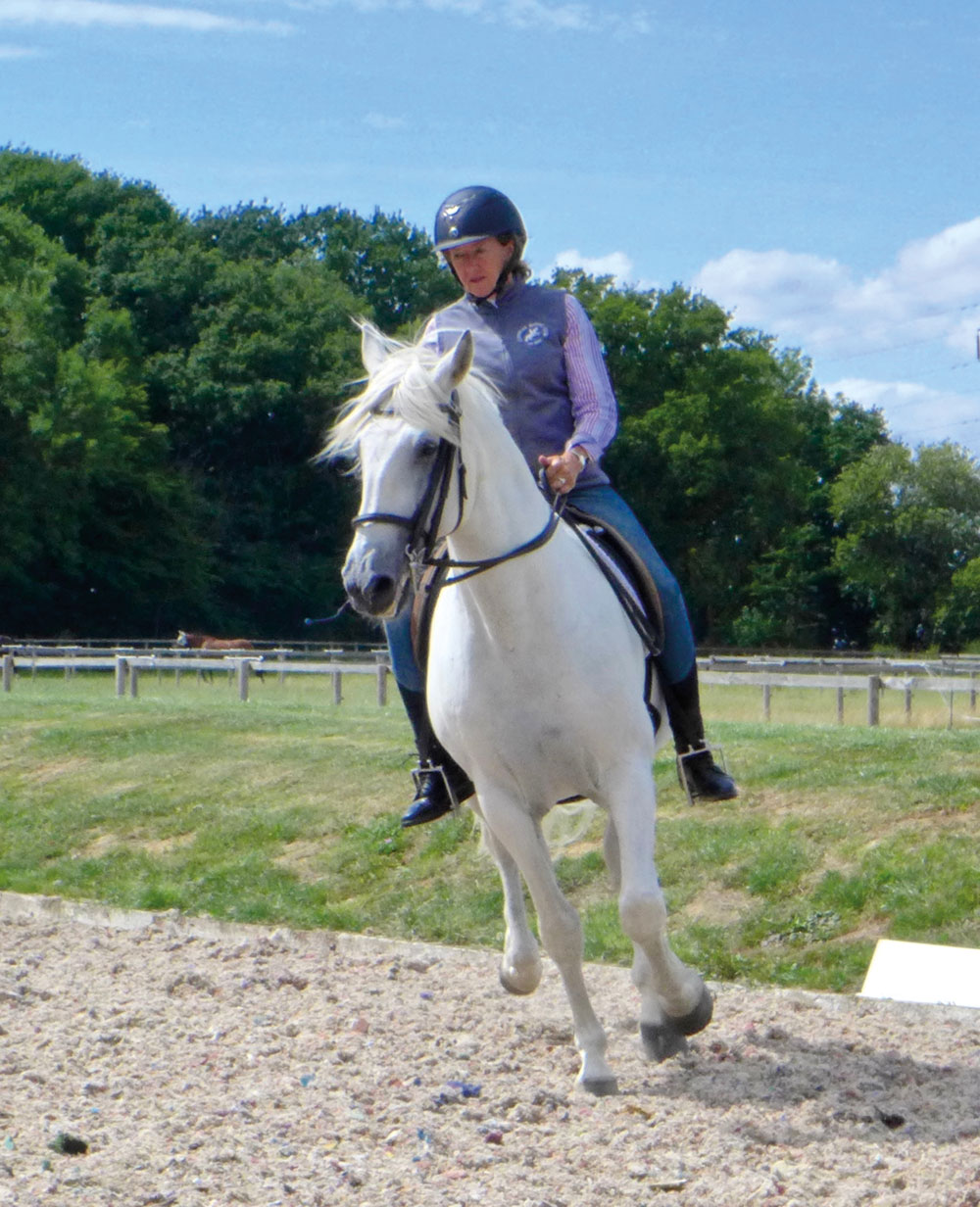
Canter Transitions
A good canter transition is all down to timing and “feel.” The horse cannot push off from the outside hind if the rider sits too much into the back of the saddle. Unless he is very big and strong, the horse will feel blocked by the seat and, since the rider’s weight often drifts to the outside on a corner or circle, he will be doubly compromised.
Instead, the rider should advance their inside hip and sit into the inside seatbone. This will free up the outside leg and lighten the outside seatbone so the horse has a chance to step under more easily and push off behind in every stride.
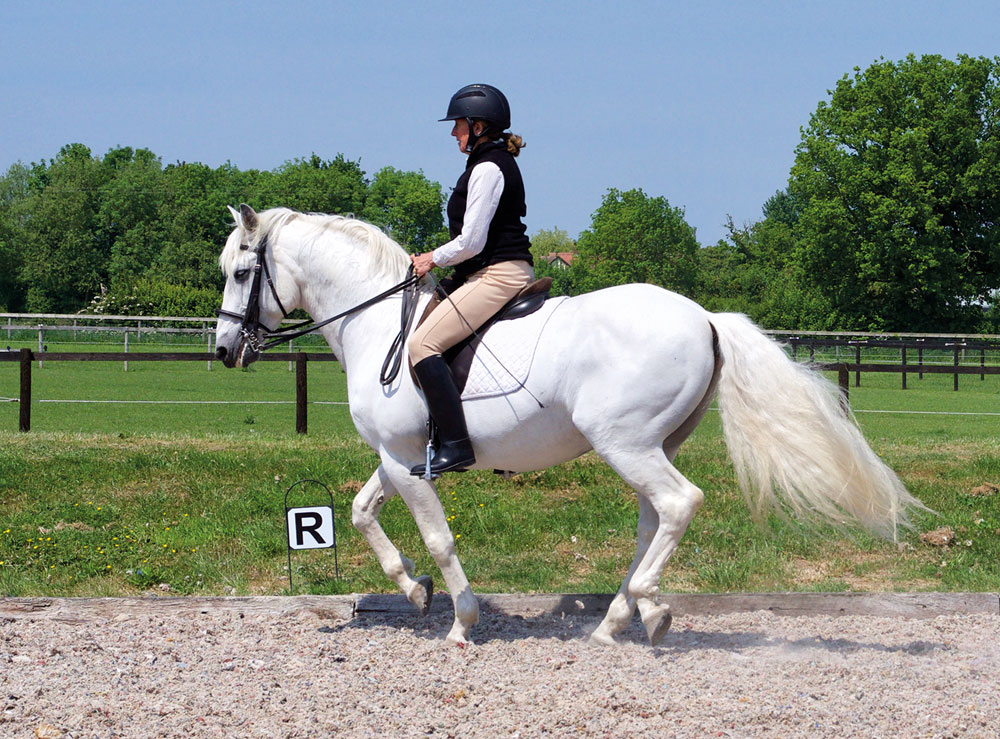
The rider’s inside leg sits at the girth and the inside rein should be light to accommodate the incoming inside fore.
Often, people find it hard to think about their hips. What will really help the horse is the act of deepening the inside leg and putting more weight into the inside stirrup. The feeling should be one of stepping down—never pushing against.
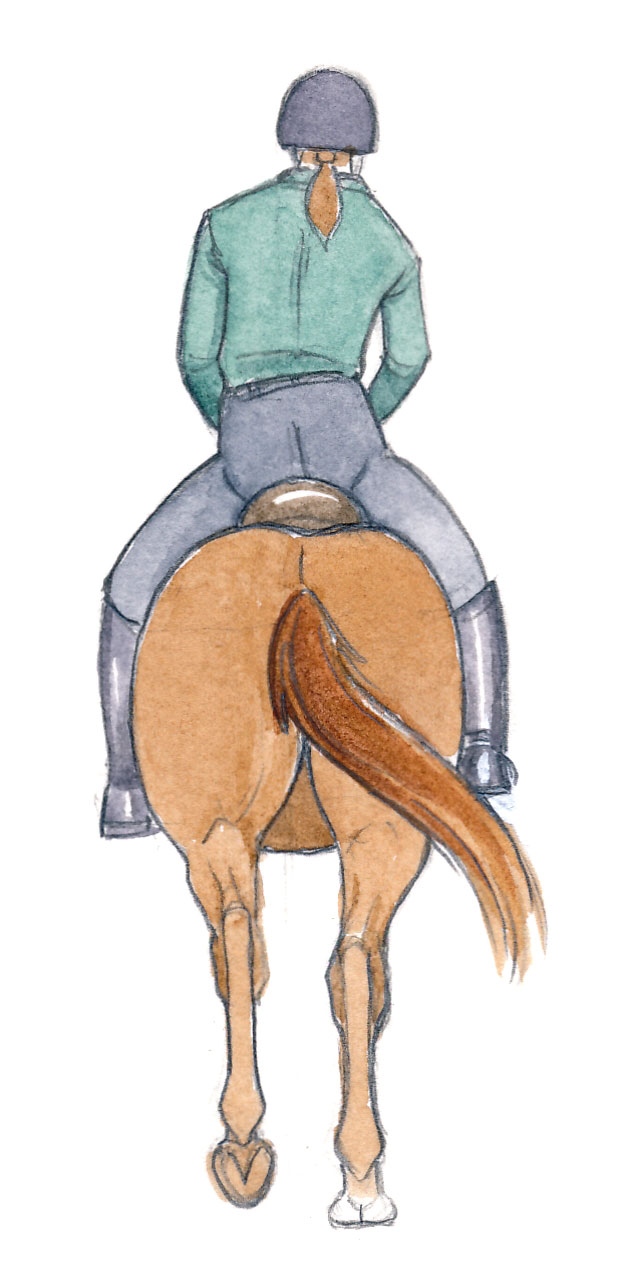
On the ground, this is exactly what would happen if we cantered or skipped ourselves, which is where my Weight Aid Workshops are so valuable. In order to push off from behind, we have to jump into the inside leading leg, and that is the feeling I try to teach riders. Think of skipping right! (Or left, as appropriate.)
It is the same on the horse. Once we let our weight down and step into the inside stirrup, we can push off more effectively with the outside leg behind the girth and the horse can follow our lead. Provided we keep our weight directly under us and let our weight go down naturally through gravity, our canter will be confirmed.
There is no reason for it to be lost, or for the horse to go disunited or change, just as long as we maintain pressure in that inside stirrup. It is also important that the outside hand does not give away too much, which can throw the horse onto the inside shoulder, instead of keeping his inside hind well under him.
Excerpted from The Rider’s Balance, Understanding the weight aids in pictures, by Sylvia Loch. Used with permission of Trafalgar Square Books, www.horseandriderbooks.com

